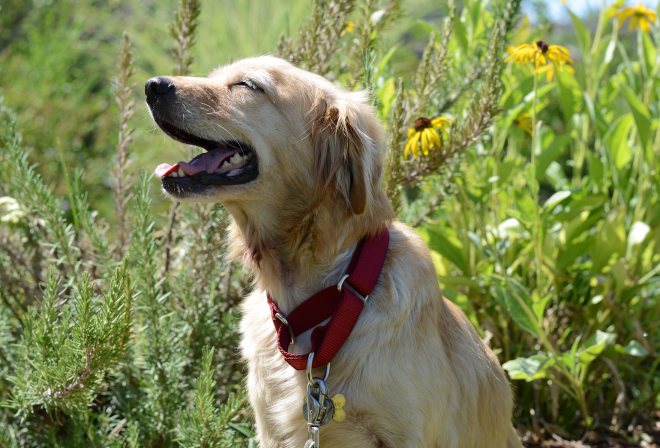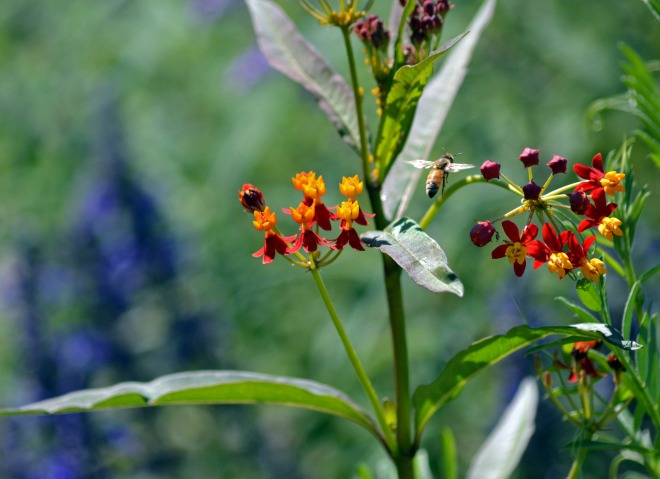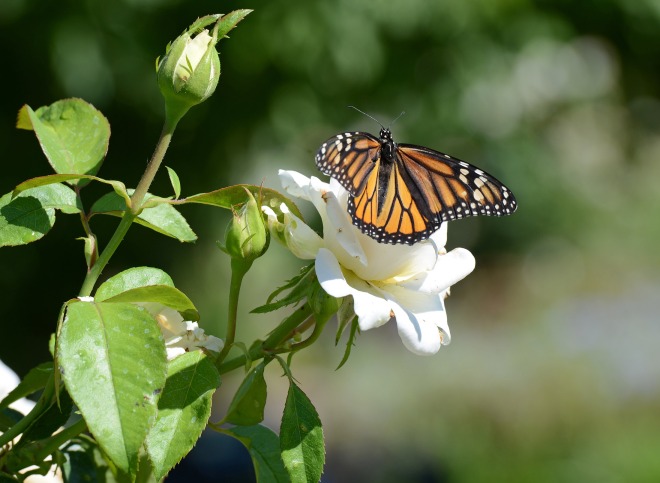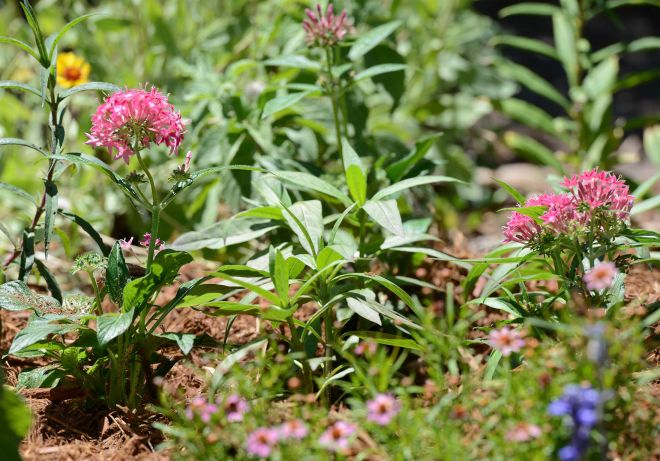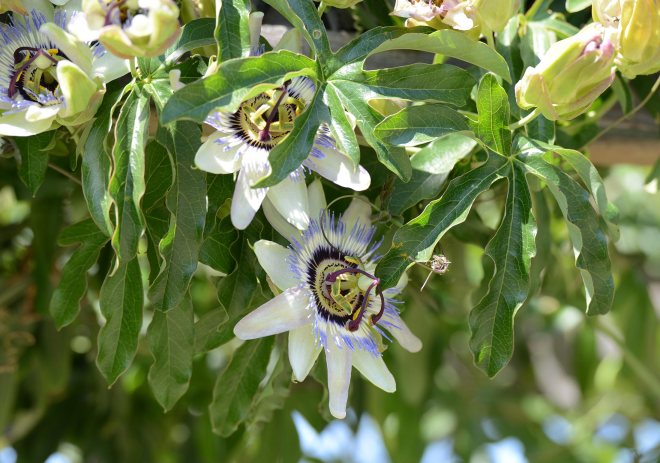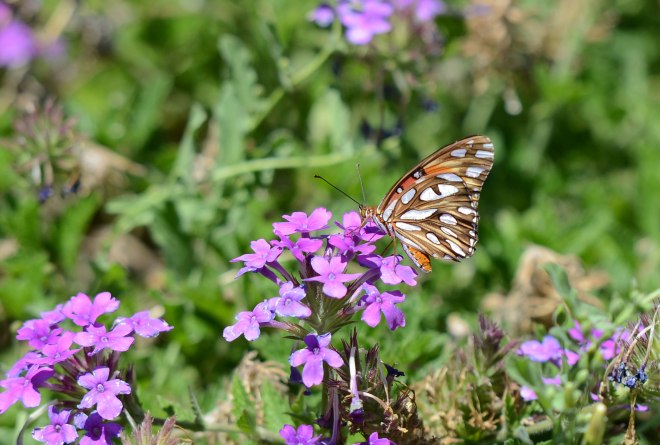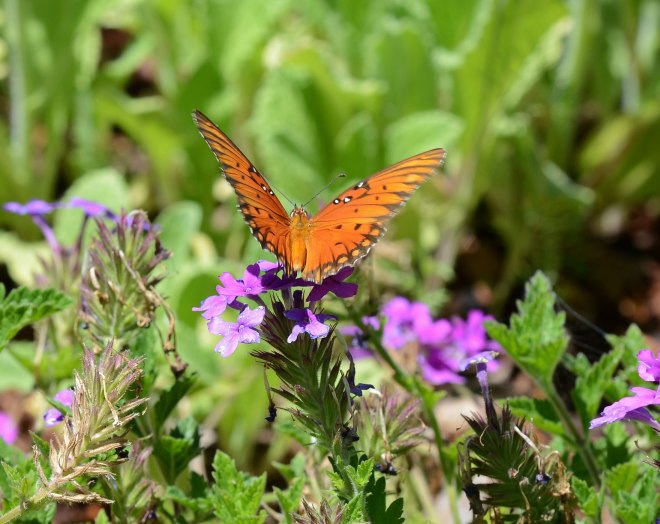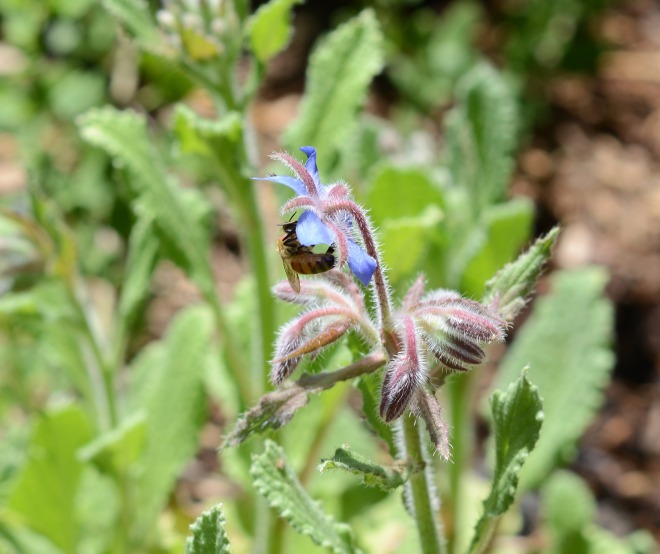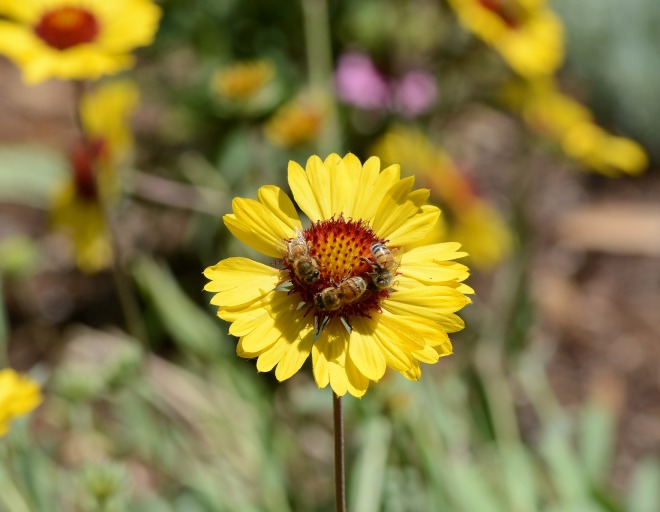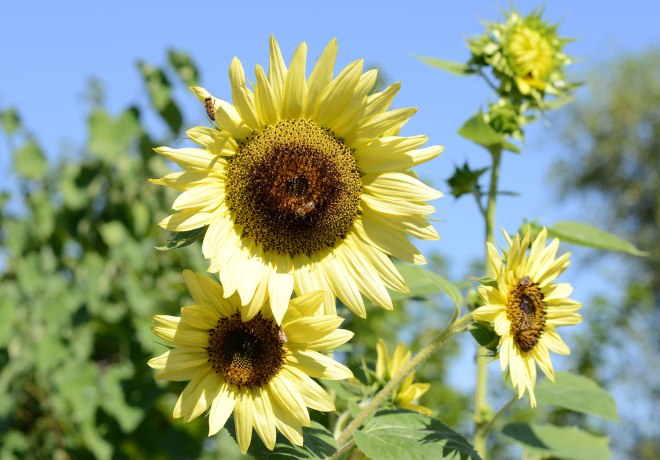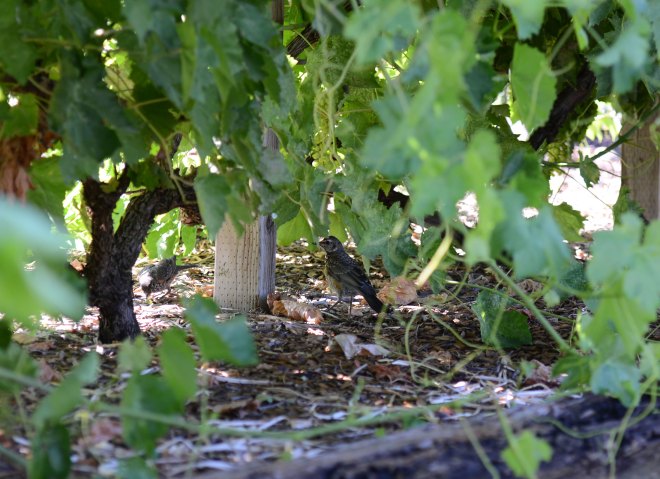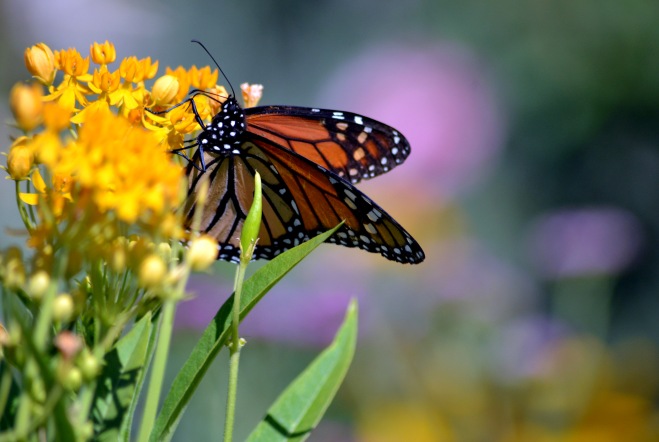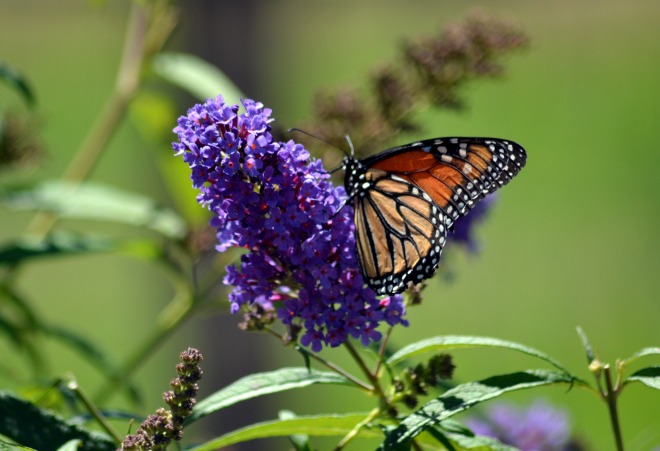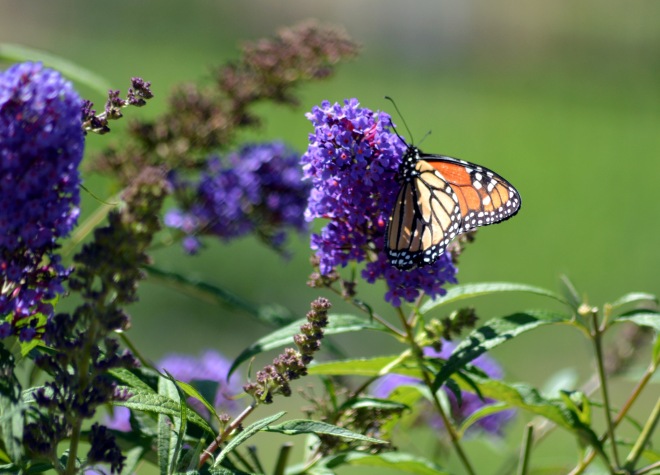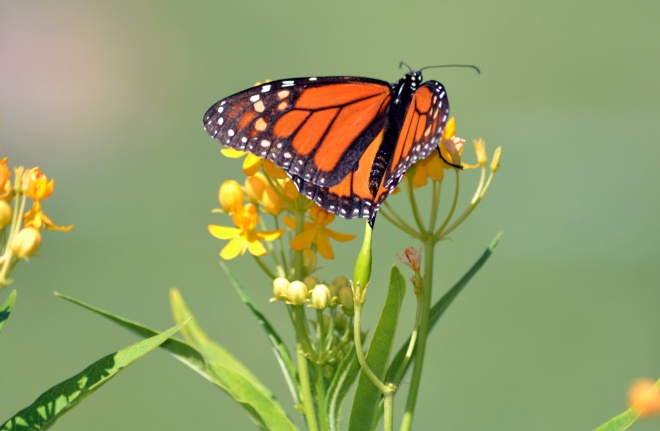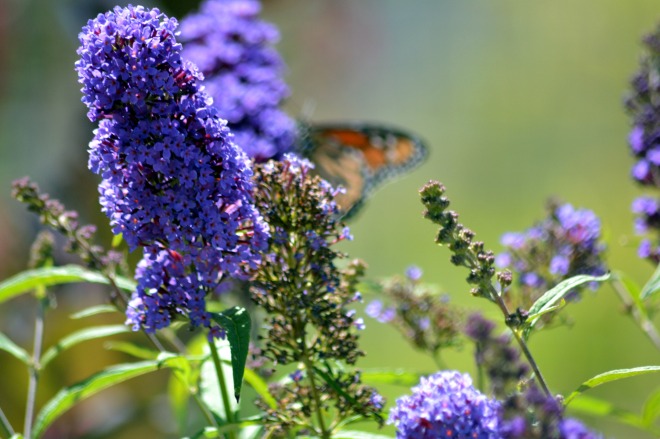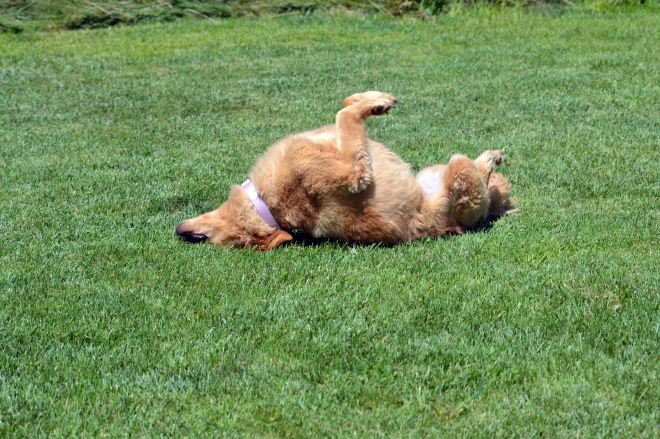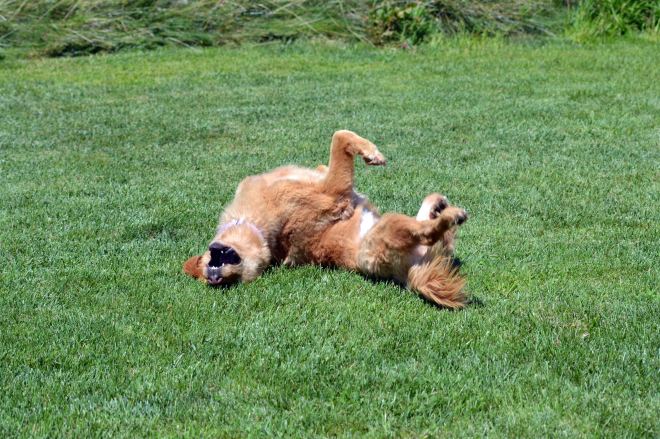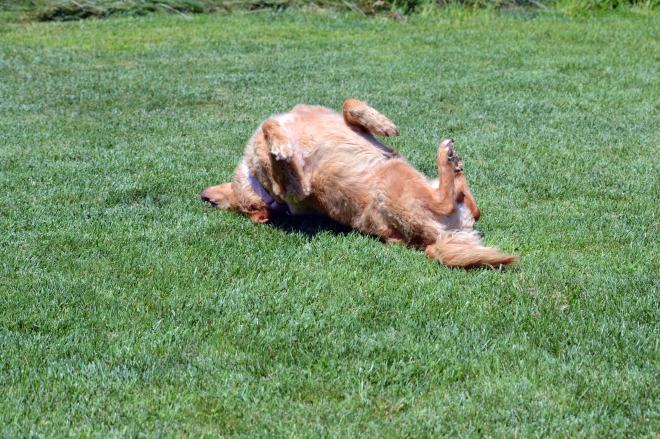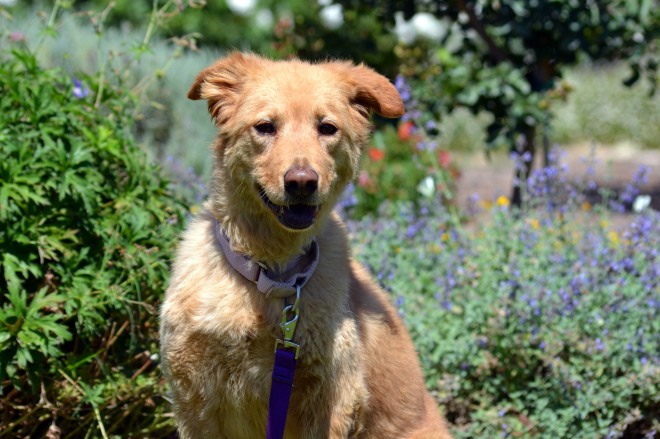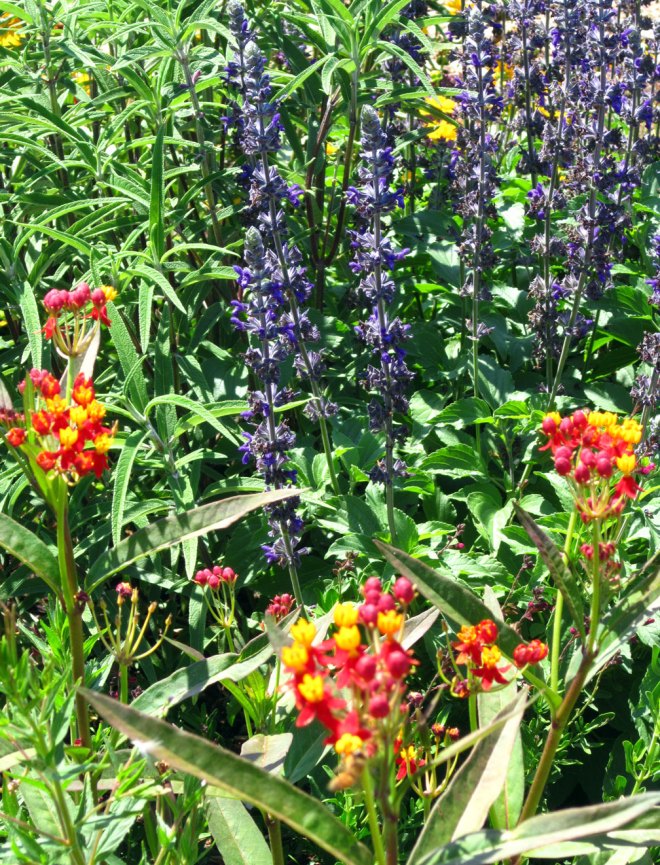Our garden not only provides a welcome place for rescued dogs – it supports them through donations for commemorative bricks in our Memorial Garden Path and plaques on our Garden Wall.
This is Sally.
This young, puppy-faced dog has already had a lifetime of breeding. Those days are over. Pampering and TLC are our orders for her moving forward.
But pups are not the only creatures helped by our garden.
Monarch butterflies have a symbiotic relationship with Milkweed – their host plant.
A female monarch lays its eggs on a sprouted milkweed plant. The eggs hatch in four to five days producing tiny yellow, black and white banded caterpillars which feed solely on Milkweed. After three weeks of voracious munching, the caterpillar enters the pupa stage and gradually changes into an emerald-green case ringed with golden dots. After five weeks old, the transformation is complete and it emerges as a butterfly.
Two or more summer generations might be produced in the North before the migration begins for over-wintering in the South. Their principal winter vacation spot is Mexico, with some finding warm refuge in Florida, Cuba or Southern California.
Today, Monarchs are disappearing in huge numbers. Their habitat is being lost due to development, overuse of herbicides, climate change and roadside clearing programs. Once common, this beautiful butterfly is on the verge of collapse. We can all help by creating Milkweed “way stations” – which is exactly what we have done in the Memorial Garden.
While it is a perennial, hardy for zones 3-9 – the Milkweed we planted last year did not reappear. So we reinvested and have installed a couple dozen more plants in small patches throughout the garden.
The brilliant Gulf Fritillary, which flourished in our area until the 1960’s actually became extinct in our region.
For reasons unexplained, it made a reappearance around the year 2000. Its host plant is the Passionflower vine – which graces one of the entries to our garden.
The Gulf Frit has a particular taste for the nectar of Lantana, Mexican Sunflower and apparently, Verbena.
It’s no surprise that it has found a welcome home here.
And then there are the bees. Colony collapse is threatening honey bees everywhere. Honey bee pollination is critical for tree nuts, berries, fruits and vegetables. The loss of Honey bees threatens crop production and other species who depend on it as well.
There are many theories surrounding the cause of the disappearing bees, but little certainty. We can support them now by improving their health and habitat – and reducing the things known to be hazardous to both. Give up or severely limit the use of pesticides. If you must use them – avoid applying during mid-day hours, when honey bees are most likely to be out foraging for nectar and pollen on flowering plants.
Plant bee-friendly plants – those that are good sources of nectar and pollen such as bee balm, coneflower, goldenrod, aster, borage and sunflower.
Finally, there are those that we unintentionally support in the garden. Bunnies, lizards, snakes and birds are welcome guests – as long as they keep a respectable distance or don’t eat more than their share. The birds – which have been knocking off the grapes and gobbling them up – may be pushing their luck this year.
They better watch out. I bet we can find some bird-dogs around here somewhere!


